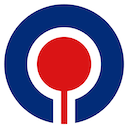Browse by Category
Question Link
Question Link
Question Link
Question Link
Question Link
Question Link
After you buy the Standard Subscription you will have the subscription assigned to the email address on which you were logged in when the payment has been done. In order to use the purchased subscription, you need to Sign In with your email and password inside Project Plan 365 app (look upper right corner for Sign In button).
Question Link
Question Link
Question Link
Question Link
There are two possibilities. You purchased the application from the store (Microsoft Store, App Store, Google Play Store) and you don't need to Sign In, just go to menu Help-Subscriptions and press on Start Complete Editor Subscription. Or you purchased the application from our website and you don't remember the email address you used. Please submit a ticket to our Support Team.
Question Link
Question Link
Question Link
Is the Team Planner view available on the Standard license or only on the Business license?
Question Link
Question Link
Question Link
Question Link
To enter a per-use cost resource click View - Resource Sheet. In the entry table click on column Type select Cost. After this, assign that resource of type cost to a task using the Task Information dialog. In Resources tab select the cost resource and enter the cost, then click on the OK button.
Question Link
Question Link
Question Link
Question Link
Question Link
Question Link
Question Link

